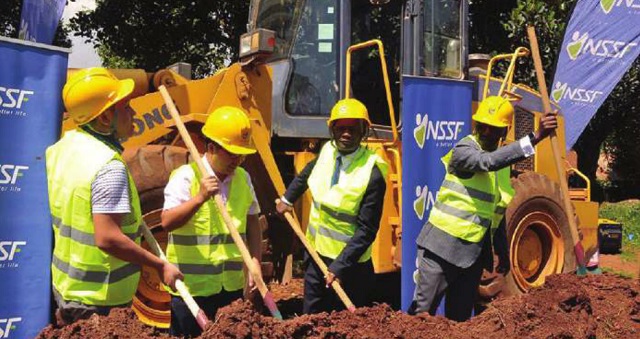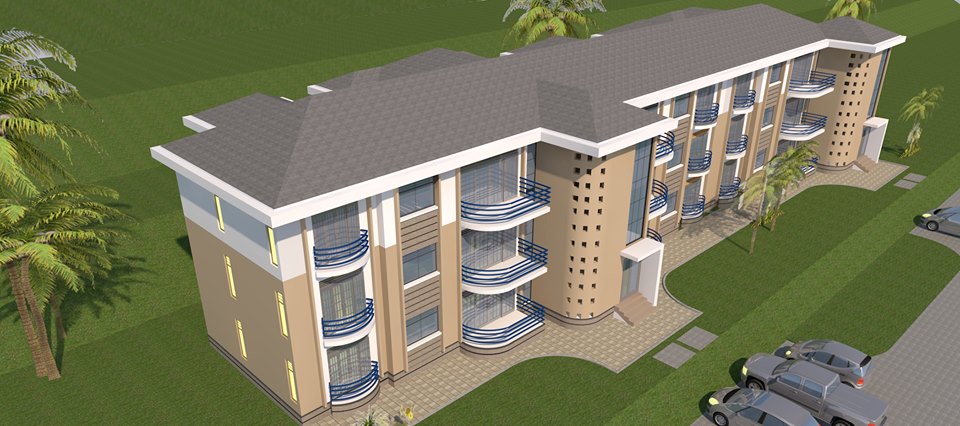Analysts question feasibility of Shs 650m houses in glutted market yet demand is higher for low end accommodation
At the beginning of this month, the National Social Security Fund (NSSF) commissioned a large-scale project worth Shs14.5bn to construct a housing estate at Mbuya involving 40 residential houses.
This venture puts NSSF in a jumble of stiff competition given that several other players are providing similar houses at more competitive prices. Some analysts are worried that given the market dynamics in the real estate industry in recent times, NSSF could be jumping in at the deep end where established players are already struggling to sell off similar houses.
NSSF’s estate is to be completed in about 24 months and the Fund hopes to earn a return of about 20% on the investment, according to Richard Byarugaba, the managing director. He says they have identified an “investment opportunity” in the housing deficit and the lack of adequate and well planned real estate in Kampala.
“Ugandans are hungry for property in planned housing projects and we hope that this estate will be a model that can be replicated elsewhere in Uganda,” he said at the ground-breaking ceremony on June 1. The 40 flats, which are being constructed on 0.5 acres of land worth Shs 3 billion, will be sold for an average of $194,610 (about Shs 650m).
A quick calculation shows that the total cost of the project (plus land) will be Shs 17.5 billion while the total value of the estate will be Shs 26 billion – indicating a net profit of Shs 8.5 billion when all the flats are sold.

According to an official of Property Services Ltd, a real estate development company affiliated to the Mukwano Group, a three- bedroom house in their organized estates goes for $178,000 (Shs 594.4m) while the four-bedroom and five-bedroom houses go for between $200,000 and $325,000. It takes between 3-6 months to sell off a house but it could take up to nine months if one wants to get a higher return.
The Mukwano Group owns the Royal Palm estate at Butabika near Luzira where they have built over 200 high-end semidetached homes. But the real estate market is in a slump. Before 2015, the Ugandan market was the best in the EAC region, and business was really good. Turnkey projects were the in-thing and many houses were being sold ahead of schedule.
Then the market started slowing at the beginning of 2015 and is yet to recover. Before 2015, the company would sell 100 houses in a year. They can only sell a handful now. Normally, the smaller threebed roomed homes move faster than the bigger 4-5 bedroomed homes because of the price. At the moment, 90% of the houses at Royal Palm estate have been bought.
Apart from Royal Palms, there are also other players such as National Housing and Construction Corporation, Kensington Heights, Nationwide Properties, Tirupati Developments and Mirembe Villas that are offering ready- to-occupy homes in organised environments.
At Kensington Heights, a three- bedroomed house goes for $160,000 (Shs 534.4m). At the Chinese-backed Mirembe Villas at Kigo, a project that is being spearheaded by the Buganda Kingdom, 4-6 bedroom houses are being sold at between $250,000 (Shs 835m) and $435,000 (Shs 1.45bn).
Additionally, at the end of 2013, NSSF announced plans to construct 3,000 houses at Lubowa, Wakiso District with all the houses being sold off. These projects directly imply that NSSF’s real estate assets would decrease even further from a mere 7.8% of its Shs 6.5 trillion total value, yet some argue that it should instead purpose to grow its real estate segment to at least 15%.
Comparatively, NSSF Kenya have empty land valued at UShs 240 billion, while their buildings and housing estates, including Nyayo high rise estate at Kibela, are valued at Shs 1 trillion. Some analysts say Mbuya would have been an appropriate site for a high rise estate with hundreds of affordable flats that NSSF can rent out to its members for many years.
Byarugaba says the ongoing projects are in line with the Fund’s investment policy that enjoins them to undertake investments that are expected to produce an attractive return over the long term period. However, some analysts question the rationale for focusing on making money at the expense of the more sustainable venture of providing accommodation that the majority of its members can afford.
While Fred Muhumuza, a lecturer at the College of Business and Management Sciences at Makerere University, has his reservations. “Let us not forget that the market for such houses has also gone down. They (NSSF) struggled to sell off a few units at Mbuya a few years ago,” he said. “It is the money-making interest rather than offering members cheap accommodation that is driving that agenda.”
Byarugaba defends their decision to set up high end housing. “It is not true that we are focusing on high end housing only, this is a matter of timing. Mbuya is a high-end area where we can`t build low end homes. Ugandans should wait for 2017 when we begin construction of 5,000 units at Temangalo where we have large chunks of land,” he said. “These will be affordable houses to our savers and the general public. We will communicate the details when time comes.”
Gideon Badagawa, the chief executive at the Private Sector Foundation Uganda, also hopes that NSSF did their homework as regards financial and investment planning/ appraisals.
“I guess they are into housing not because they want to provide shelter for the not-well-to-do, but to maximise return on investment,” he said.
 The Independent Uganda: You get the Truth we Pay the Price
The Independent Uganda: You get the Truth we Pay the Price




